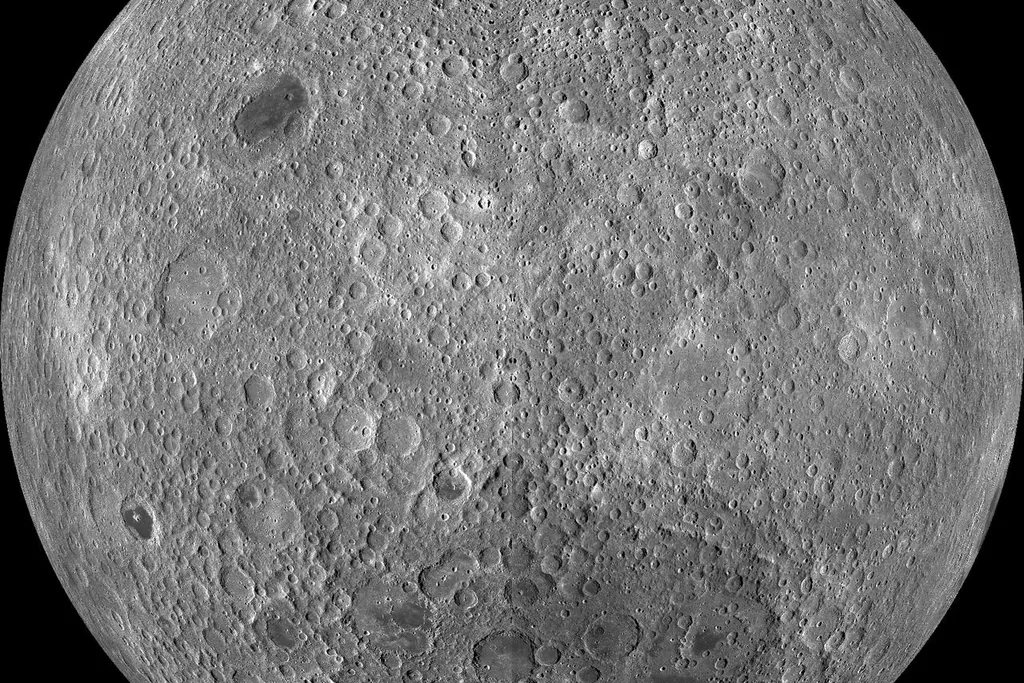The Moon's Far Side Is Strangely Dry—Lunar Samples Suggest It's Much More Parched Than the Side That Faces Earth
The Moon’s Far Side Is Strangely Dry—Lunar Samples Suggest It’s Much More Parched Than the Side That Faces Earth
Chinese researchers analyzed the first-ever soil samples returned from the far side of the moon, but further samples will be needed to verify their findings
The far side of the moon—seen here, captured by NASA's Lunar Reconnaissance Orbiter—could be much drier than expected.
NASA / GSFC / Arizona State University
Soil samples from the far side of the moon suggest the little-known, distant face of our natural satellite is much drier than the side that faces Earth, according to a new analysis.
In 2019, China became the first nation to land on the far side of the moon, and last year, it made history again by becoming the first to return samples from that region. Now, those retrieved bits of lunar soil are shedding more light on the mysterious “dark side” of the moon.
Scientists at the Chinese Academy of Sciences received five grams of soil samples from the Chang’e-6 mission and analyzed 578 particles using electron microscopes. They found between 1 and 1.5 micrograms of water per gram of rock in the samples, whereas previous measurements from the near side of the moon contained as much as 200 times more water. Their results were published in the journal Nature last week.
These unexpected findings can help paint a clearer picture of the amount of water present on the moon, as Sara Russell, a planetary scientist at the Natural History Museum in London who was not involved in the research, says in a statement.
“For a long time, it was believed that there wasn’t any water on the moon at all,” Russell says. “This has only started to change relatively recently, when measurements taken from lunar meteorites and Apollo samples showed that there is water trapped in the moon’s minerals.”
“Even then, I don’t believe anyone had suggested that water wasn’t evenly spread across the moon,” she adds. “We’ve been biased by our use of samples from the near side of the moon, and this discovery, if confirmed, has a lot of implications for understanding how much water there is on our celestial neighbor.”
Chang'e-6 was the first lander to bring back samples from the far side of the moon.
CNSA
Further research is still needed before the findings can be verified, scientists caution. They can’t draw any definitive conclusions from a single sample, especially since samples from the moon’s near side have ranged from 1 to 200 micrograms of water per gram of rock.
“It’s hard to say whether the far side is definitely drier than the near side,” says Shuai Li, a planetary geologist at the University of Hawaii at Manoa who was not involved in the study, to the New York Times’ Katrina Miller.
“More far side samples are required for testing and further unraveling” how much water the moon contains, study co-author Sen Hu, a researcher at the Chinese Academy of Sciences, tells theAssociated Press’ Marcia Dunn.
The team suggests their samples can offer more information on the role of water in lunar evolution. For now, it’s unclear why one side seems to have more water than the other.
One hypothesis, however, goes back to four billion years ago, at the creation of the South Pole-Aitken basin, the massive crater on the moon’s far side where the samples were collected. Whatever impact formed this feature might have been strong enough to send water flying away from the basin to the moon’s near side.
Or, the samples might be from a deeper part of the lunar mantle. “To me, that is a little bit more realistic,” says Mahesh Anand, a planetary scientist at the Open University in England who was not involved in the study, to the New York Times.
Knowing what’s on the far side of the moon can also help future lunar missions. “We’re hoping to get astronauts back on the moon in the near future, and potentially in lunar bases, so it’s important to understand what resources are there,” Russell says in the statement. “The far side of the moon would be an especially important place to have a base, as it would allow us to carry out astronomy and other research that’s completely shielded from the Earth.”
“If this is to become a reality, then we need to send more probes to the moon so we can find out as much as we can about it,” she adds.
With countries like the United States, China and Russia ramping up their lunar presence, further research will surely reveal more mysteries—and answers—about our celestial neighbor on space missions to come.
Get the latest stories in your inbox every weekday.


